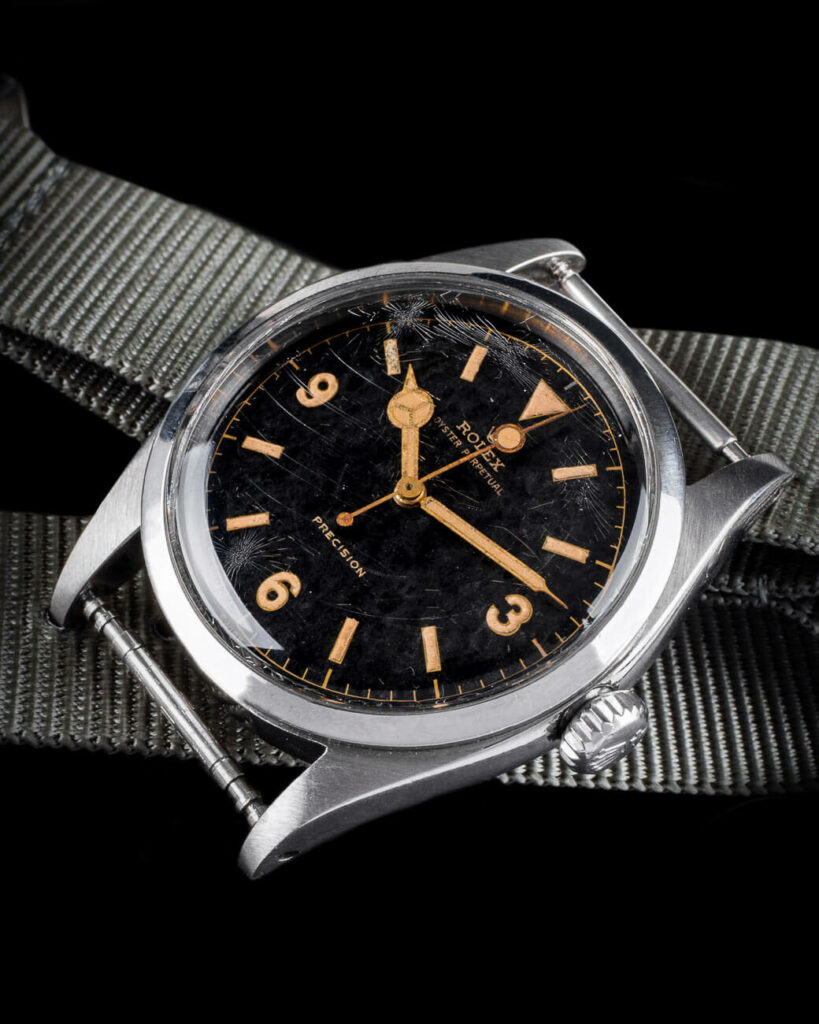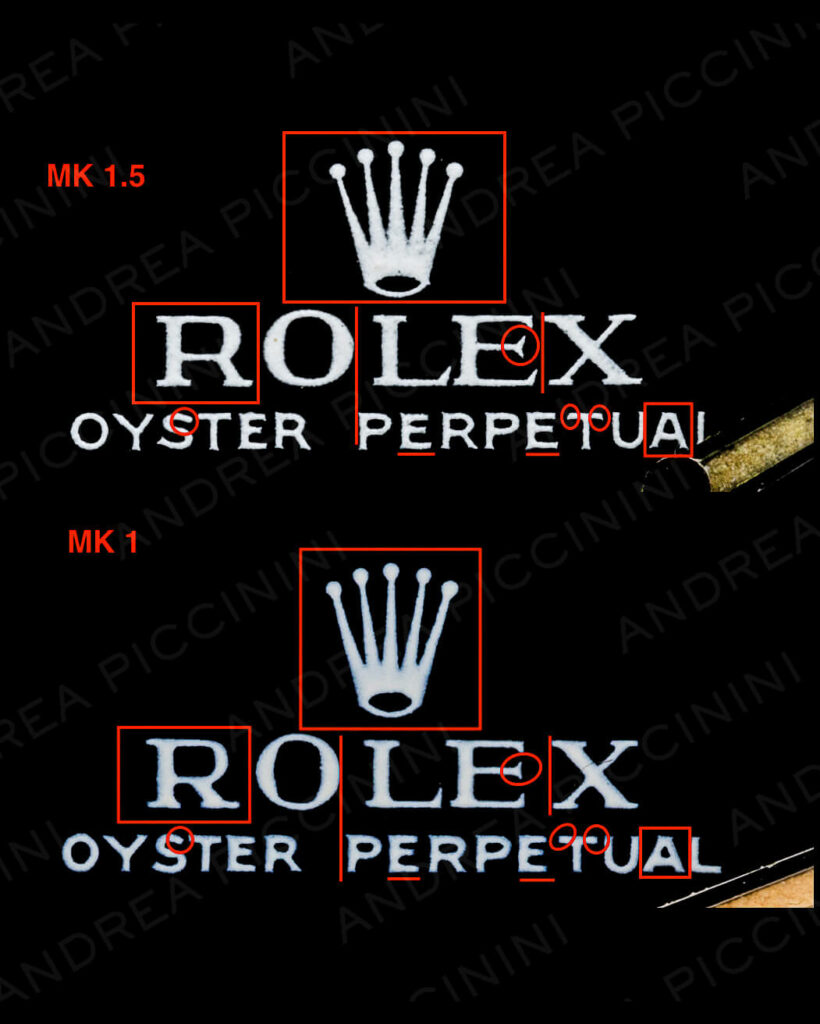The purpose of this article is to provide accurate and verified information about which dials, and how many, were used in reference 16660 throughout its production.
Before delving into our analysis, it is important to clarify the terms ‘Pallettoni’ and ‘Bicchierini’ as used by collectors when referring to Rolex dials. ‘Pallettoni’ dials are characterized by a matte base and printed circular indices, with luminescent material applied later. On the other hand, dials with a gloss base and luminous hour markers enclosed by a metallic border are known as ‘Bicchierini’ dials.
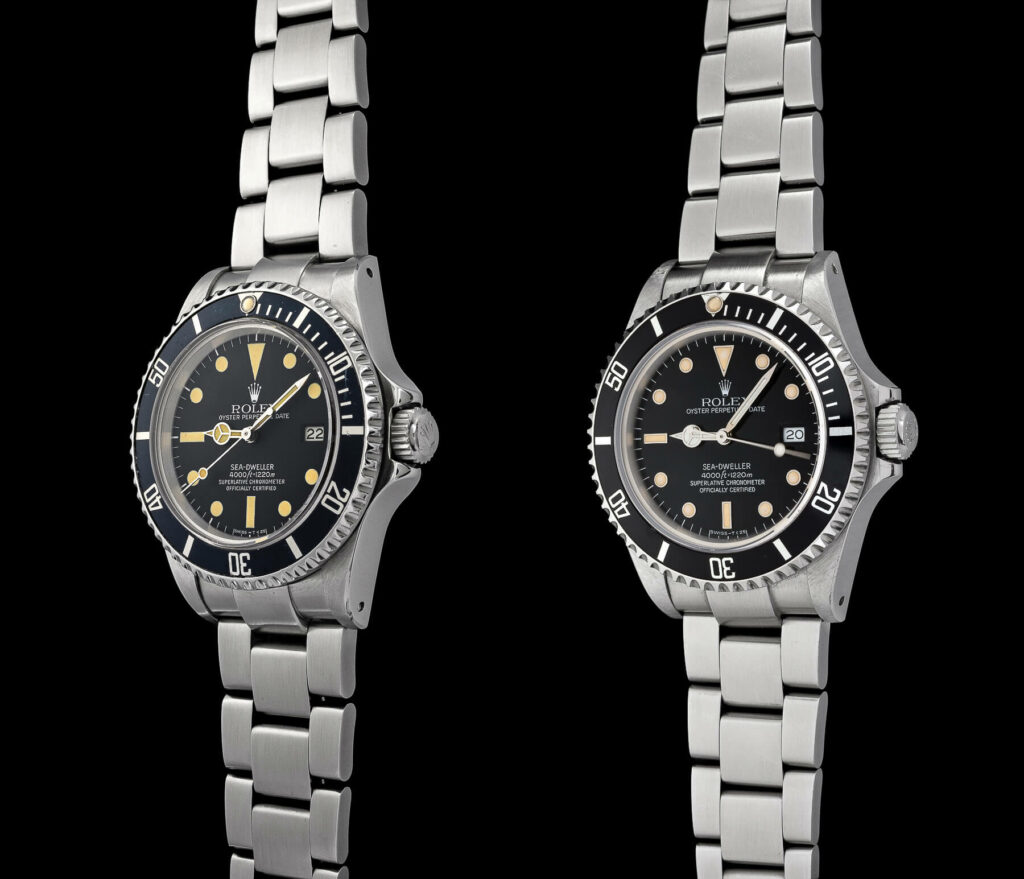
Being able to quickly distinguish between these types of dials is extremely useful when examining certain Rolex models from the mid-1980s, such as the 16750, 5513, and, of course, the 16660.
During that time, Rolex decided to update the aesthetics of some references by transitioning from ‘Pallettoni’ to ‘Bicchierini’ dials.
The goal of this change was to give the watches a more contemporary look, aligned with modern trends.
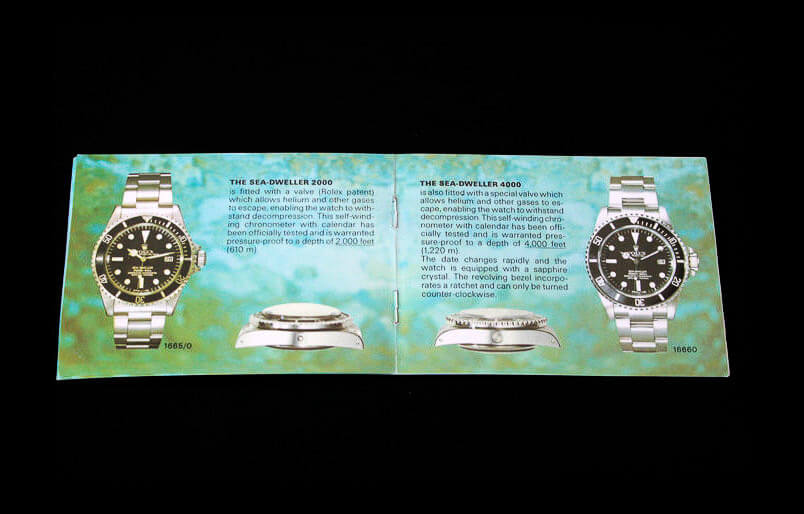
The transition from ‘Pallettoni’ to ‘Bicchierini’ dials was gradual and not without challenges.
The subcontractors responsible for producing and supplying the dials encountered various difficulties in achieving the mirror finish Rolex required for the ‘Bicchierini’ dials.
Some defects became evident early on, even appearing shortly after the watches were sold in official Rolex boutiques.
The first batches, in particular, showed imperfections in the glossy finish, such as cracking, bubbling, and even a opacification of the base, which took on a matte-like appearance.

Due to the initial issues in the production of the gloss ‘Bicchierini’ dials, Rolex, through its official service network, replaced the defective dials free of charge with service dials.
This is why it is crucial to accurately classify the original ‘Bicchierini’ dials, especially for references produced over a short period, such as the 16660 covered in this article.
To provide the most comprehensive overview, we will also classify the ‘Pallettoni’ dials.
It is worth noting that until the mid-1980s, the ‘Triple-6’ featured ‘Pallettoni’ dials, similar to those found on the earlier reference 1665.
“PALLETTONI” MATT DIALS
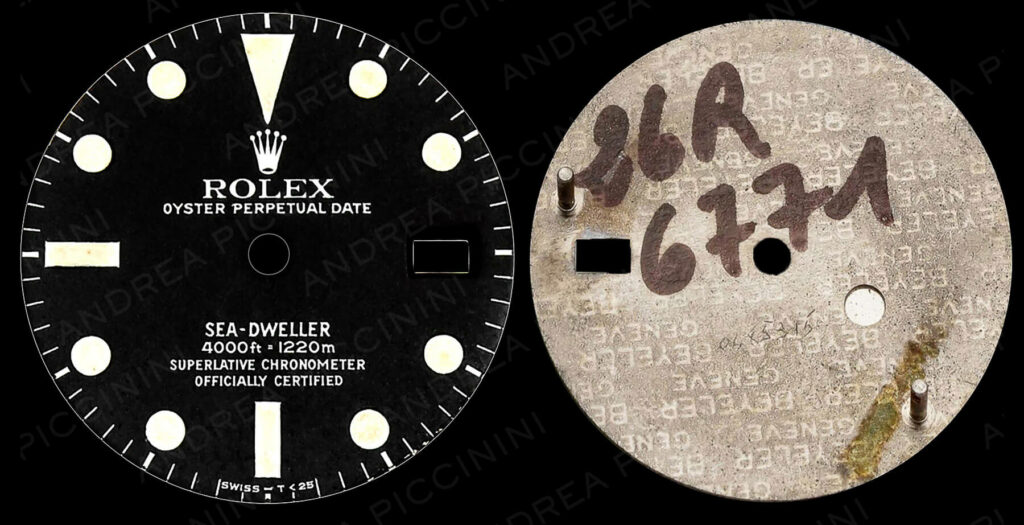
The first ‘Pallettoni’ dial used on reference 16660 is quite unusual, and its existence was unknown until a few years ago.
It was first brought to attention in a discussion on the American VRF Forum, where it was initially considered to be fake.
At the time, it was Roberto “Jatucka” who successfully proved its authenticity through detailed comparisons and technical analysis.
What makes this dial unique is that the pad used for printing is identical to that of the 1665 MK1, with the only difference being the depth rating—610 meters for the 1665 and 1220 meters for the 16660.
To date, only a handful of examples with this particular dial have surfaced on the market, making it extremely rare and highly collectible.
You can find the original VRF discussion-> HERE <-
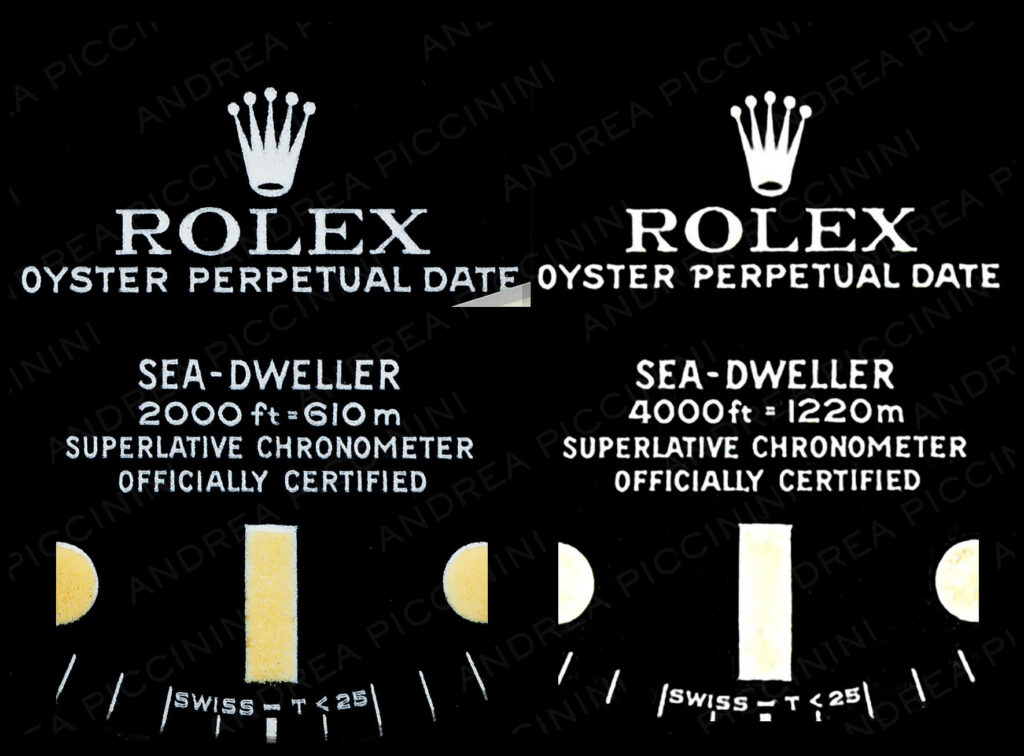

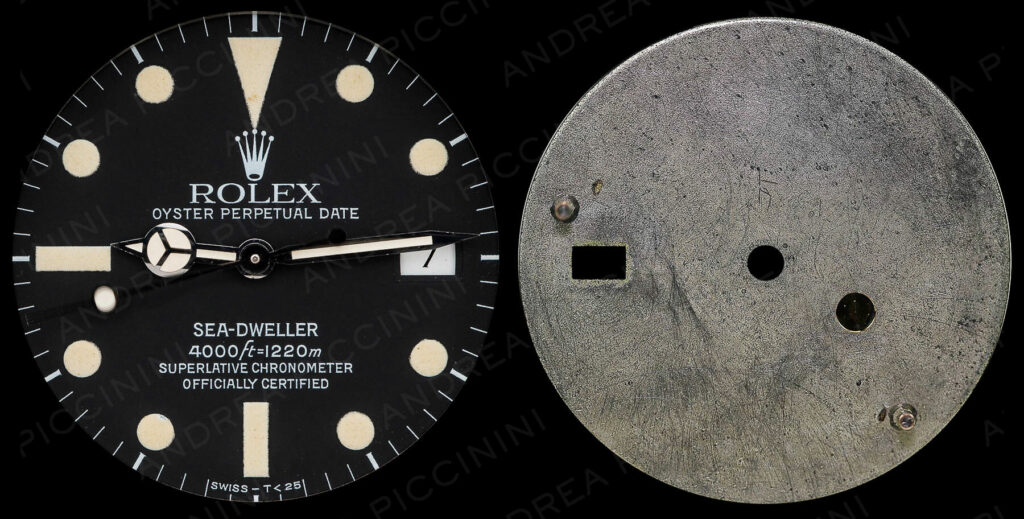
In general, the main differences between the four ‘Pallettoni’ dials of reference 16660 lie in the shape of the crown and the ‘FT’ lettering.
The four Mks also vary in the thickness of the print and the presence or absence of serifs.
Mk1 and Mk1 bis are extremely similar, with the only notable difference being the vertical alignment of the letter ‘T’ in ‘PERPETUAL’ relative to the word ‘ROLEX’.
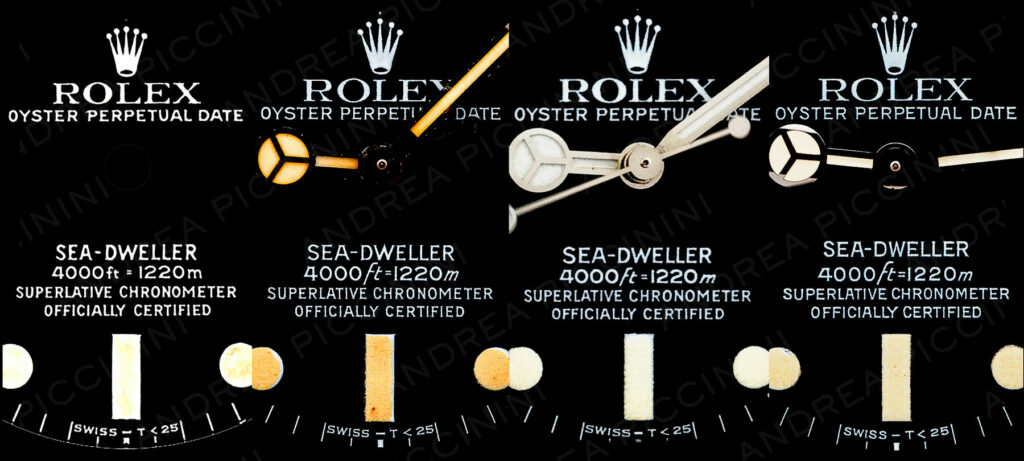
“BICCHIERINI” GLOSS DIALS

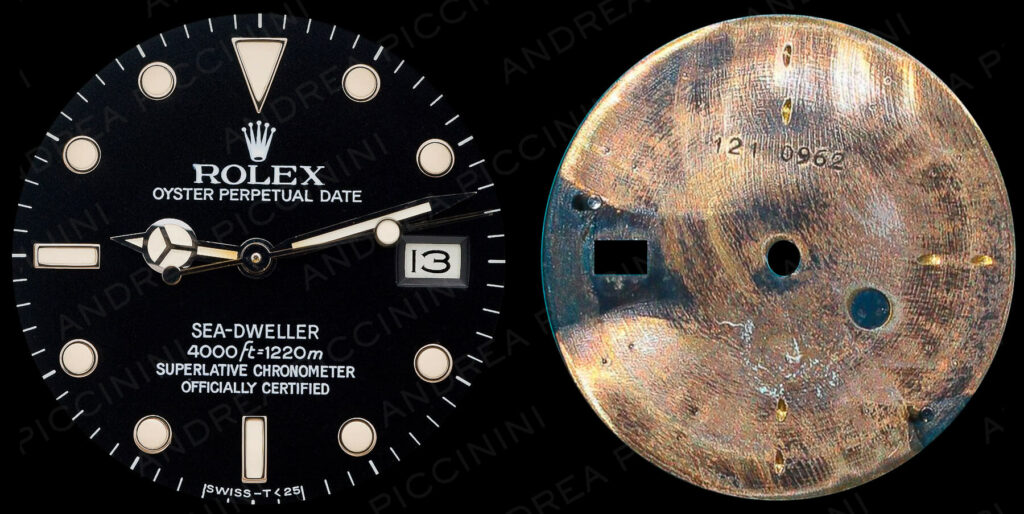
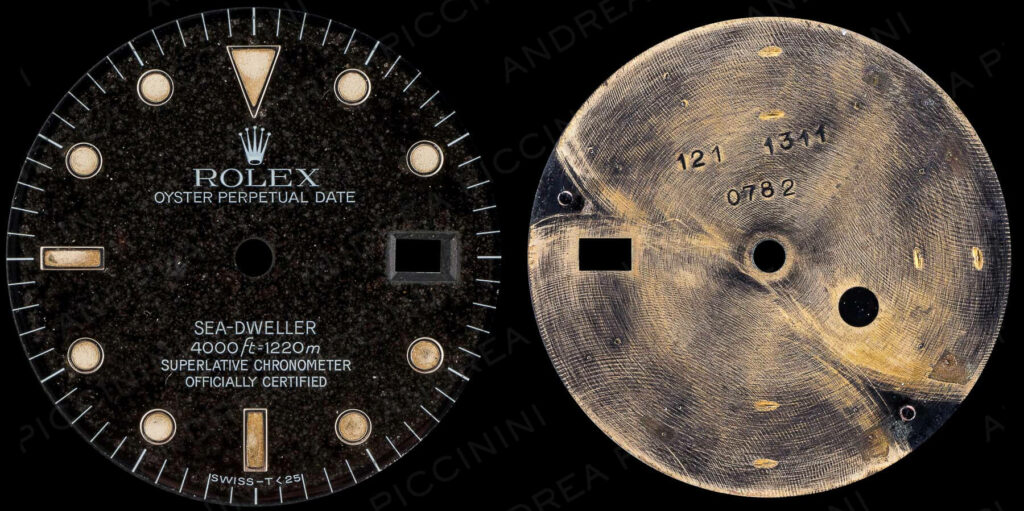
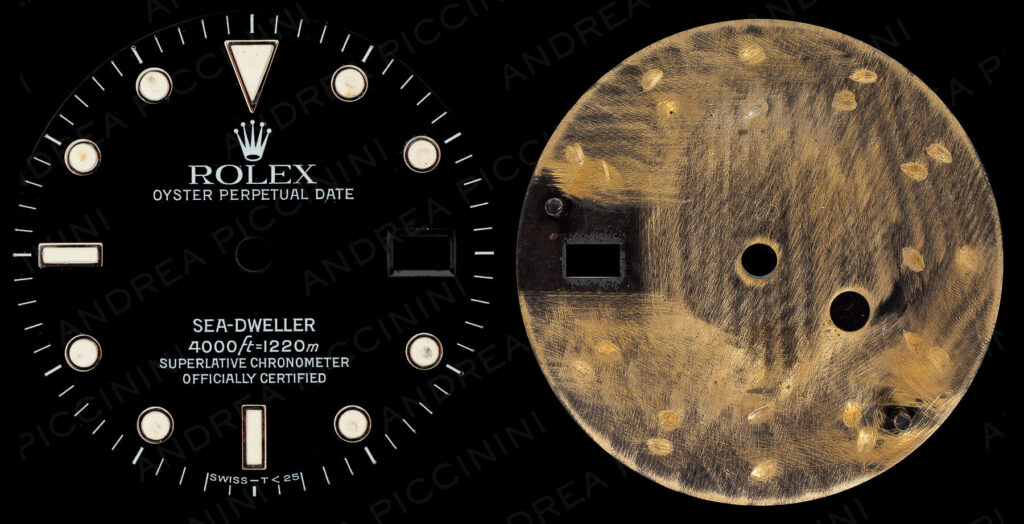
In short, the 3 types of “Bicchierini” dials differ for the different shape of the crown, words alignments, serifs and the overall tickness of the print.
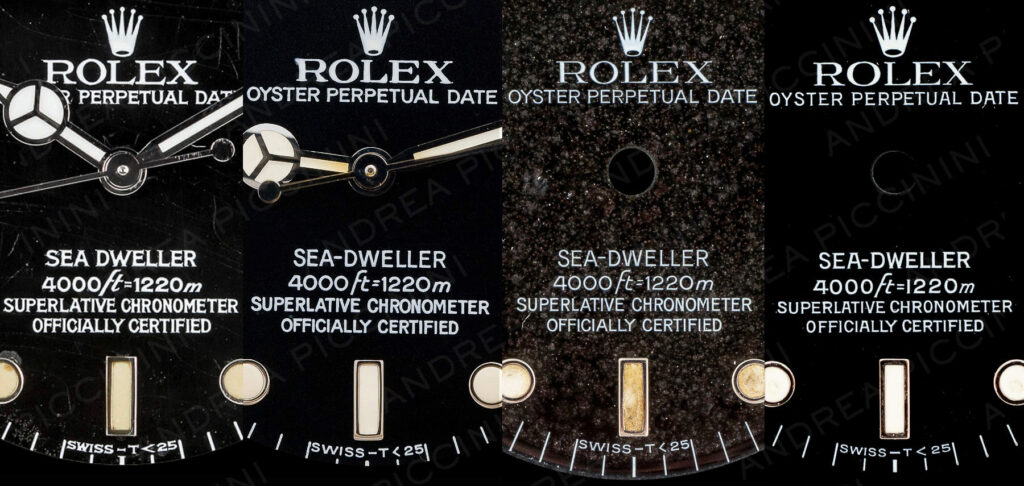
TRITIUM SERVICE DIALS
The dials with TRITIUM indexes used as service part by Rolex during the production period of the reference 16660 have identical graphics to the standard-production dial that we have identified as MK5. The only way to distinguish with certainty a Mk5 Dial from the service ones is to analyze the back. The original MK5 Tritium dial has a different back.
Some collectors believe that, on rare occasions, certain late-production 16660 specimens may have originally been fitted with what we now consider a service dial. However, proving this with absolute certainty remains quite challenging.
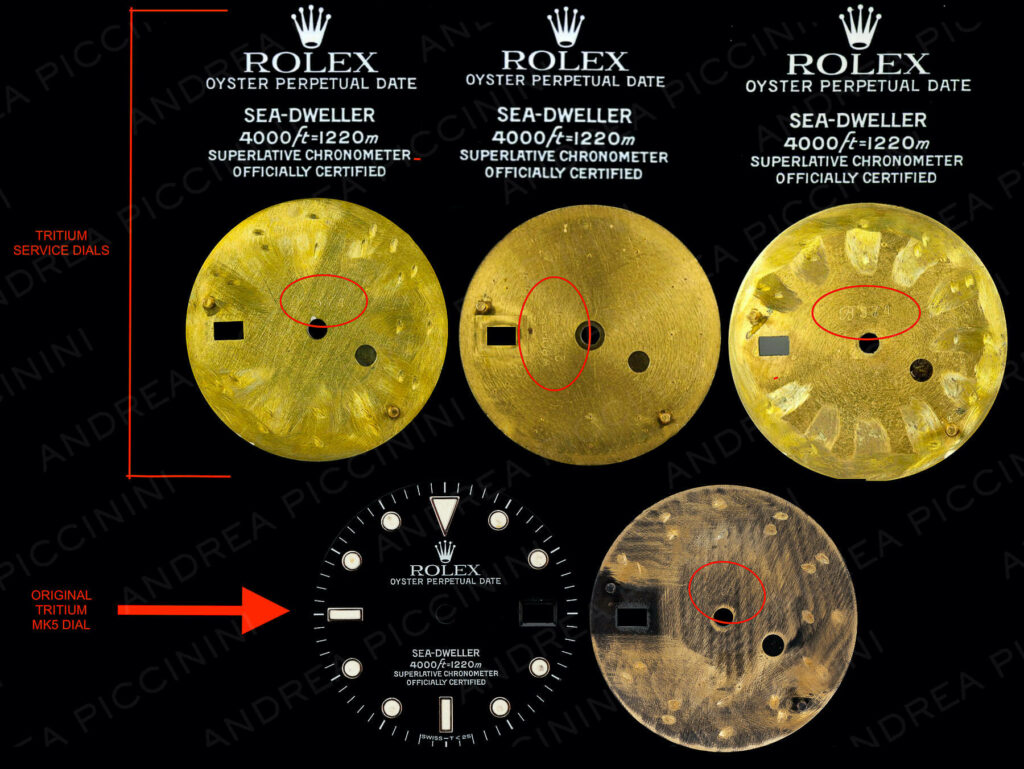
LUMINOVA SERVICE DIAL
Below the Luminova service dial produced after the end of the production of reference 16660.
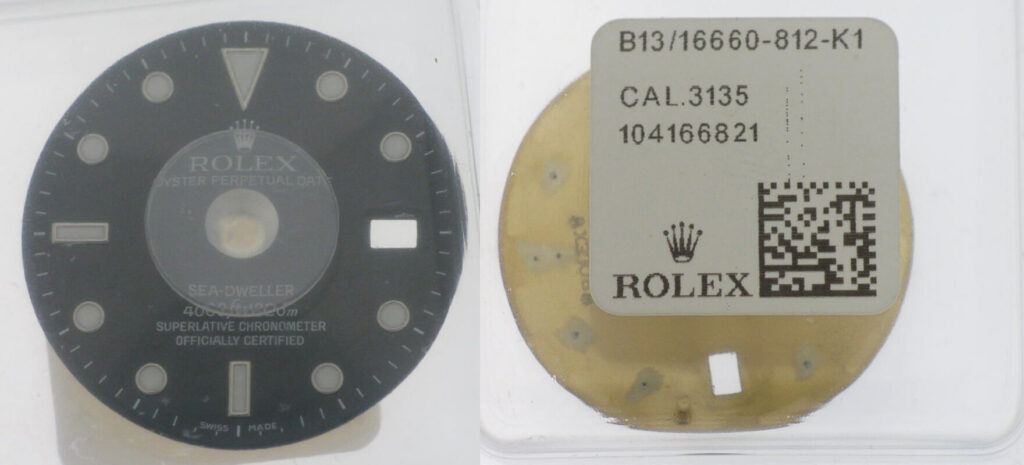
Here are all the production graphics summarized.
“PALLETTONI” MATT DIALS.
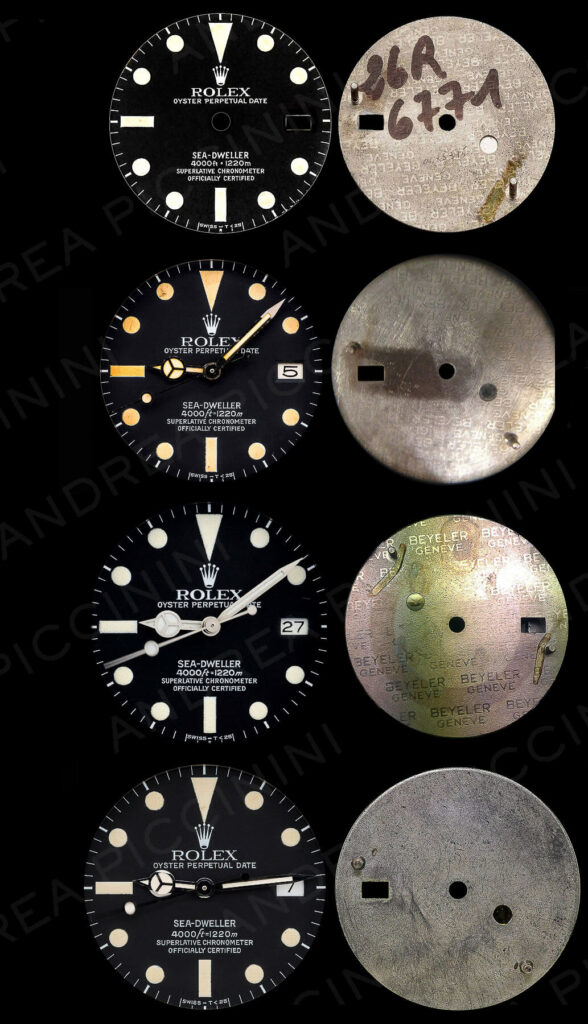
“BICCHIERINI” MATT DIALS.
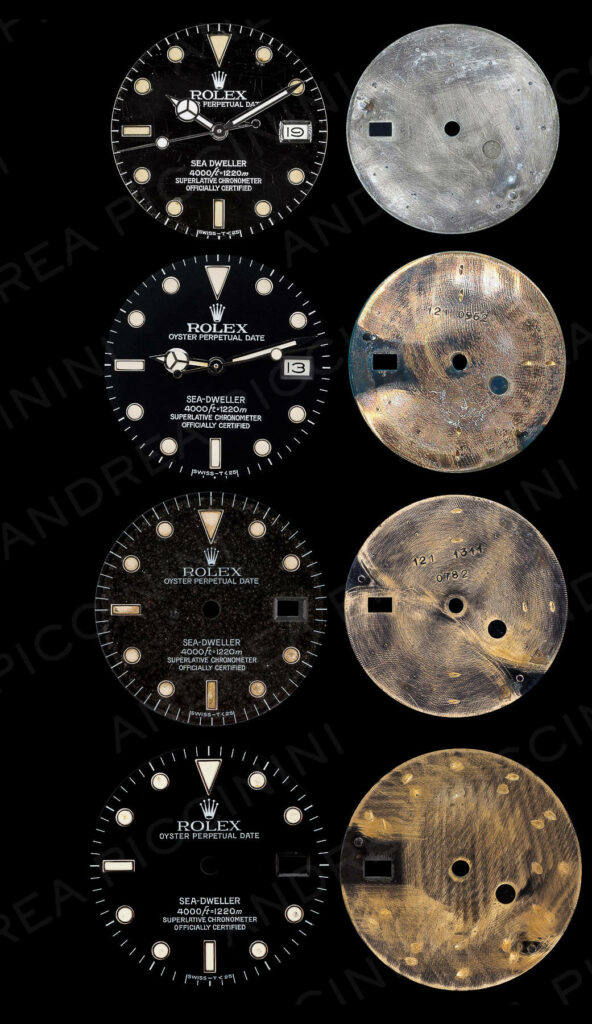
PALLETTONI & BICCHIERINI DIALS

Now you should be able to easily distinguish all the dials which have been mounted on the Seadweller reference 16660.
Hoping you liked this article we invite you to keep following our blog for more exclusive content.
This article was written and published by me on Roberto “Jatucka” Randazzo’s website in 2020. I thank Roberto for allowing me to add it to my website’s blog.”

